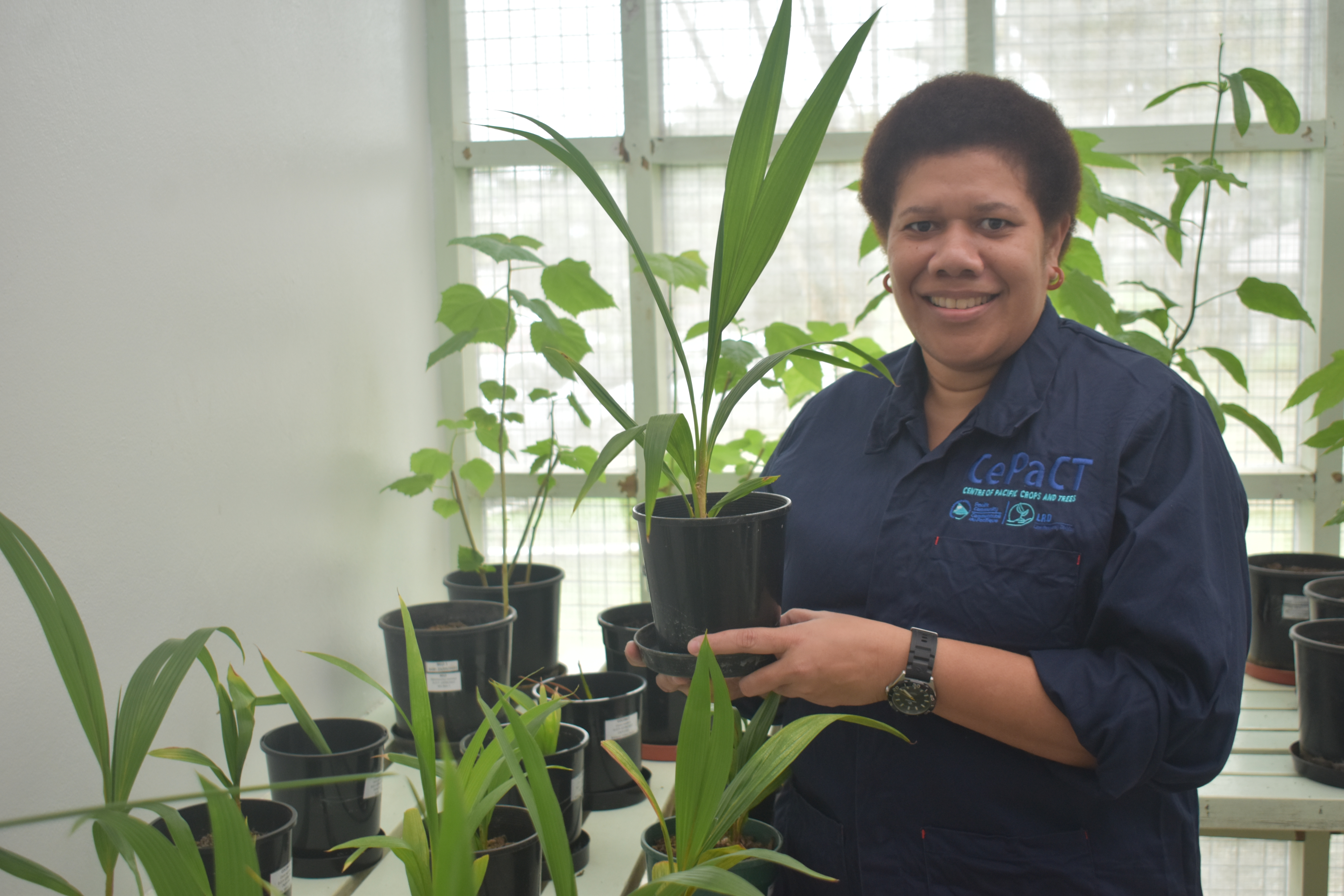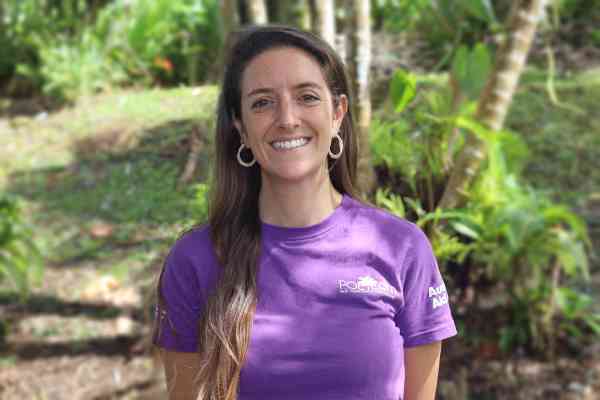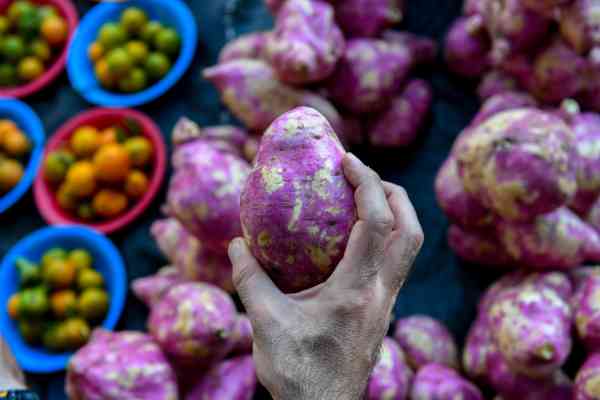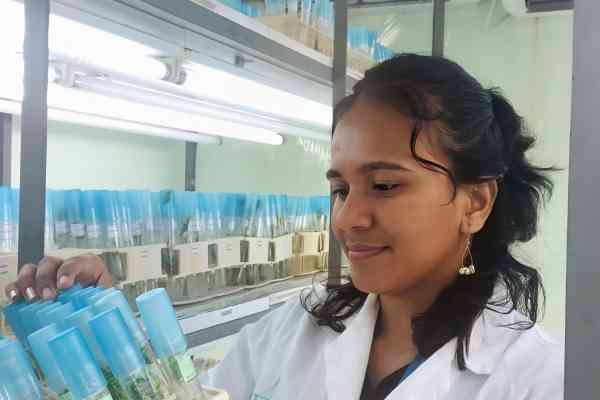(contenu disponible en anglais uniquement)
1- Could you briefly describe your academic or professional background and how it has led you to pursue research within SPC?
I started my journey pursuing science during my high school days with a keen interest in chemistry and the biological nature of life. This continued into my tertiary studies at the University of the South Pacific (USP), pursuing a bachelor’s degree and double majoring in Biology and Chemistry. During this time, my passion for the field of conservation grew; therefore, I continued my academic studies and attained a postgraduate diploma in Biodiversity and Conservation.
During one of my conservation courses, Dr Mary Taylor, a guest speaker from SPC, was invited to speak about CePaCT’s (Centre for Pacific Crops and Trees) role in conserving, utilising, and conducting research on the crops maintained in tissue culture. That particular class captured my interest, as I discovered that most traditional crops maintained at CePaCT are varieties that I thought were lost from farms our grandparents grew. I immediately approached Dr Taylor to request an intern position at CePaCT. I was recruited at SPC CePaCT in mid-2009, and 14 years later, I am still here researching protocol improvements in crop conservation and mass propagation to assist our member countries and global community in safeguarding food security.
2- Can you tell me about your research project? What inspired you to pursue it, and what are your main objectives or goals?
I hail from Savusavu in Fiji, a region surrounded by and dependent on coconut to sustain our livelihoods. However, most of the coconuts were planted by our forefathers; hence, a high percentage of the coconut palms are senile. The impact of palm senility, pests/diseases and devastating climatic destruction in the Pacific region has directly contributed to this low productivity. The conventional breeding methods cannot meet the increasing demands to sustain the industry.
Due to this situation, SPC CePaCT and the University of Queensland (UQ) have partnered up in an ACIAR project titled “Safeguarding and deploying genetic diversity for improving livelihoods in the Pacific Islands” to address the growing demand for coconut. My contribution to this project is to investigate whether the mother plant age influences the success of somatic embryogenesis and improves the germination rates of zygotic embryos of coconut. This research would help determine the best age group of coconut palms that can be used for successful micropropagation through somatic embryogenesis. It will help improve the protocols to assist in the mass propagation of coconuts in bridging the current supply gap.
3- What specific challenges or obstacles have you faced during your research, and how have you overcome them?
A few challenges were encountered through this project that were solved through regular discussions with the project coordinator, partners, and research work. Some challenges that have been more difficult to overcome include logistics in accepting coconuts from project partner countries. That is understandable, as the safety of Fiji’s biodiversity is paramount. A lot of troubleshooting and knowledge-sharing with learned scientists at renowned institutes was carried out to optimise and validate the protocol. All these challenges have also been positive because they have allowed me to acquire new skills and manage difficult situations when they arise.
4- In what ways has your research enhanced your personal and professional development?
With this research and in the 14 years I have been at SPC CePaCT, I have grown and gained a lot professionally and personally. I have attained technical skills from mentors and scientists from renowned institutes, learned how to manage time, think critically, and maintain collaborative relationships with partners and work colleagues.
In addition, with efforts to sustain the livelihoods of my community, this project has encouraged me to work cohesively with my family in Savusavu to replant 1000 coconut trees by the end of 2024 on our family land in partnership with the Savusavu Ministry of Agriculture. A total of 100 plants have been planted so far, which are managed by the women and youths. With the enhancement in my skills and knowledge development, I hope to encourage and build capacity with the current staff and recruits to support the need to improve the livelihoods in our communities.
5- Are there any specific skills or knowledge areas that you have gained or improved upon?
Skills and knowledge gained over the years include using biotechnology for mass propagation and the intricate skill of cryopreservation to conserve crops for an indefinite period. This will assist me and other staff in establishing the new cryopreservation unit at CePaCT. With envisaged research and collaborative work, I hope to attain more skills and knowledge, thus contributing to the services we provide to our member countries.
6- Could you shed some light on the organisations or institutions that have played a part in supporting your journey
SPC CePaCT has been influential in my career with the many opportunities provided to allow me to build my capacity in-house and enhance growth with internships at renowned institutes. The support of former and current CePaCT managers and colleagues has been instrumental in professional and personal development. Support and encouragement from my family and friends have been the backbone of my journey. Other institutes that have contributed to my capacity include Bioversity International in Belgium, the National Bureau of Plant Genetic Resources in India, and the University of Queensland in Australia.
7- Lastly, any advice to young aspiring researchers in your area?
Be honest and passionate about the research you intend to undertake. Life is full of obstacles, but do not let that determine your life. Like the story from the Holy Bible depicting Jesus calming the storm, problems occur in every area of life, and we may have more stormy weather than calm seas, but we should not surrender to stress but remain resilient and recover from the setbacks. As 2 Chronicles 15:7 states, “Be strong and do not give up, for your work will be rewarded.”



